It looks like you're using an Ad Blocker.
Please white-list or disable AboveTopSecret.com in your ad-blocking tool.
Thank you.
Some features of ATS will be disabled while you continue to use an ad-blocker.
share:
Changing pace from all nebulas, here is M51, the Whirlpool Galaxy. I took this with approximate 20 images using an exposure time of 30 seconds. I
didn't understand how polar align the telescope so I couldn't get any photos longer than 30 seconds. I was surprised to capture any detail at all
but the image is very soft because of the short exposure. This is another object I plan on recapturing using autoguiding.


I took a photo of the moon and superimposed it over the background stars. It's a nice a effect but not very realistic because of how bright the moon
is.
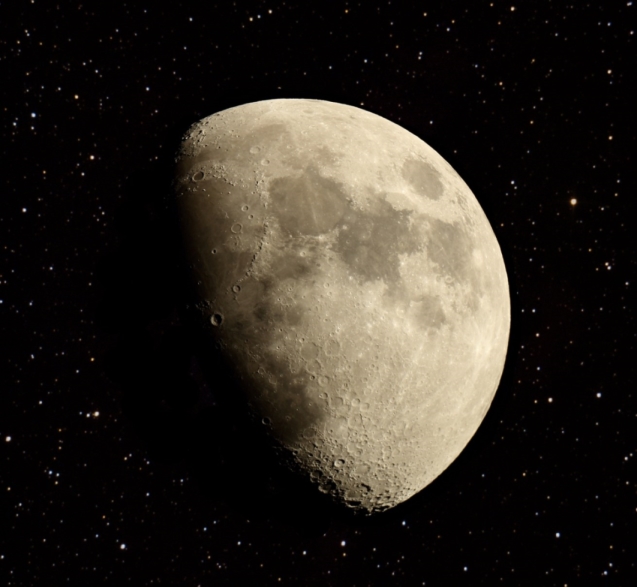

One more for tonight and I don't really know if this will work. But here is the full size image of the moon that I used in the previous post I made.
There is really so much to see that its better to right-click on it and select open in a new tab. Then click on it to view full size. The moon is a
fascinating object to look at. Because the sun angle changes daily, the moon never looks the same from day to day throughout the lunar cycle. I'll
post some more of my photos later on...
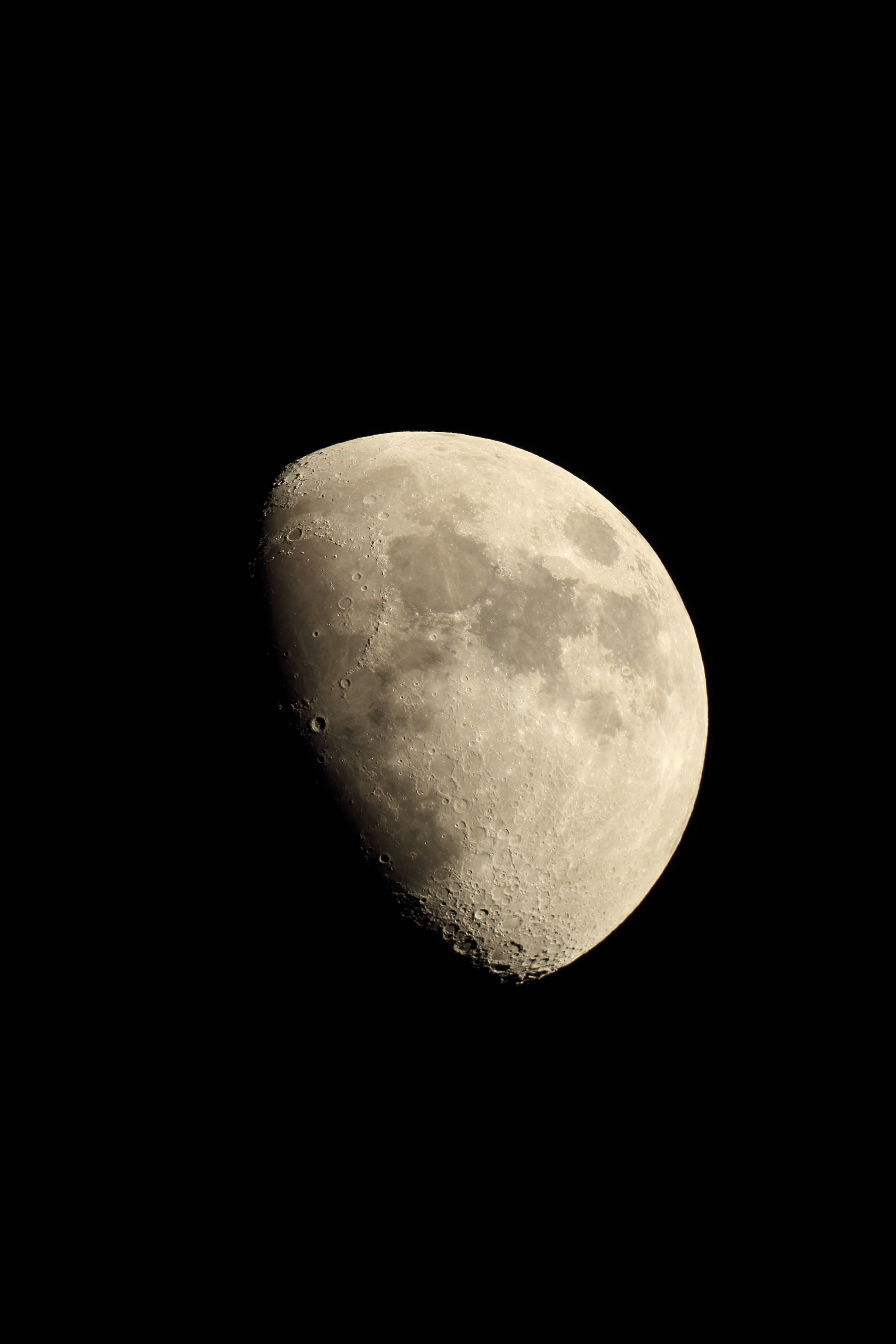

Originally posted by spacedoubt
Thanks for the additional advice on Shooting shooting stars..
I think I am going to begin investing in Upgrading my ability to shoot astrophotography. From what i am reading
it seems a lot of though has to be put on stability and tracking. Which makes sense. Too much coffee, and no tripod never makes for a good astrophoto.
Since I have a dsr. I would want to be able to mount it on my tripod with a tracker of some sort. But later, I would like to replace the dslr, with a telescope, then mount the dslr to the telescope to do the imaging. Advice on that?
You are very welcome
Yes, i would say the mount is the most important part of the setup. You need it to be solid and able to handle your scopes weight along with camera, finderscope, guide cam ect.
If you are considering getting a scope at some point but just want to use the DSLR for now, i would recommend an EQ mount. If you have a scope in mind that you want to buy at a later date like you say, then consider the weight of it. That way you can buy a good EQ mount to use with the DSLR, then when you can afford it, plonk a scope on it without having to upgrade to a better mount. This would probably save money in the long run.
I for example just have my astrotrac and DSLR on a manfrotto tripod right now. I dont have a scope although the Astrotrac can hold scopes up to a certain weight limit. My plan it to buy a reasonable mount, say an EQ6 which will cost over £1000. Then when i can afford it get a decent Astrograph telescope which will be £1500+. This way i dont have to buy everything at once, i can upgrade my set-up over time and upgrade the scope to something heavier and more powerfull without having to buy a better EQ mount.
Hope this helped. If you are thinking about getting a set-up, a HEQ5 mount is a great start. And yes, this hobby is a bottomless pit that you are forever throwing cash into.
Here is my attempt at M45. Now that understand polar alingments better, I was able to get 90 second exposures for this. Unfrotunately, the wind was
a bit much to be imaging so the image isn't that great. You can still make out part of the reflection nebula surrounding some of the stars as the
cluster is currently thought to be passing through a dust cloud. I took 40 lights at 90 seconds exposure for this.
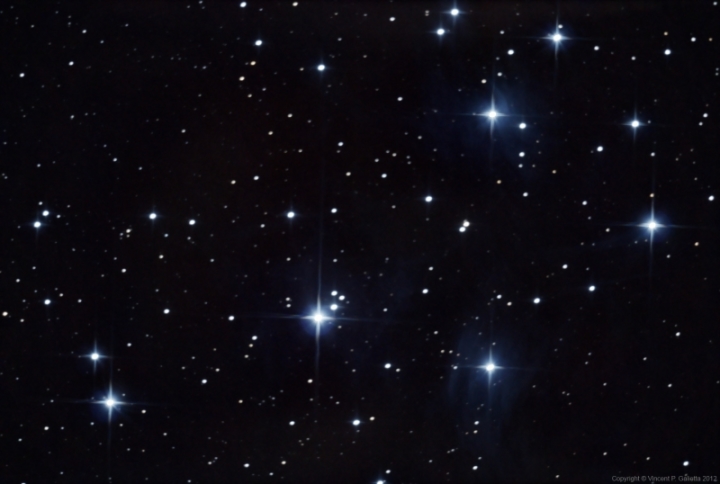

reply to post by vinceg
Those are some nice image Vinceg! I especially like M16, will have to have a go at that. I am currently outside shooting M101
Those are some nice image Vinceg! I especially like M16, will have to have a go at that. I am currently outside shooting M101
Here's one of M1, the Crab Nebula which is a supernova remnant in the constellation Taurus. I used 35 light images of 90 second expsure time each.
Need more photons though to bring out the details.
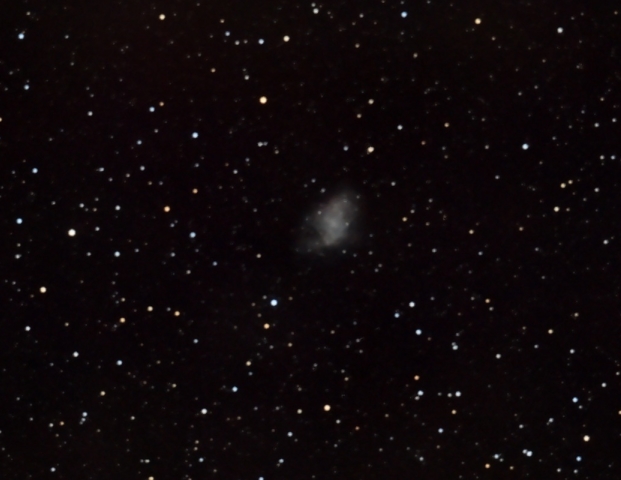

M11, the Wild Duck cluster. An open cluster in the constellation scutum. I only used 6 lights, 45 seconds expsure time each for this as my camera
battery ran out. This is a pretty dense cluster for an open cluster.
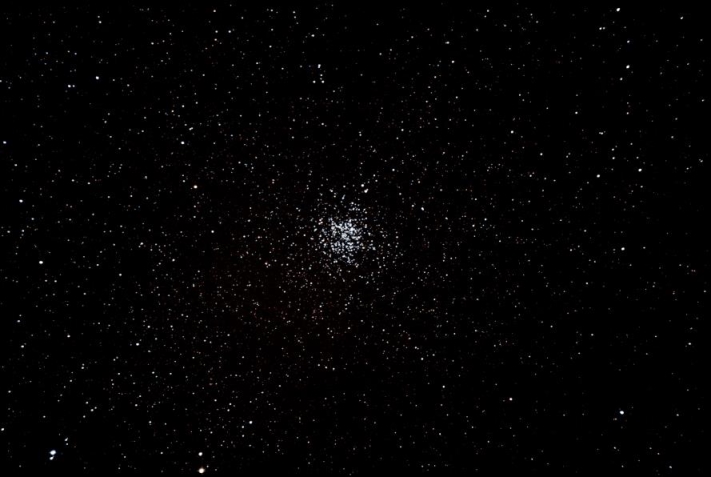

M64, the Black Eye galaxy in the constellation Coma Berenices. Most nights my viewing conditions are pretty bad and affect galaxies more than
anything else. I've never seen M64 though an eyepiece yet, only seen it in the pictures I've taken of it. 20 lights at 45 seconds exposure.
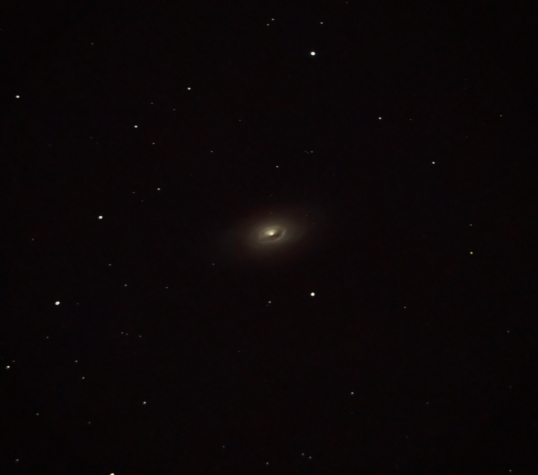

reply to post by iksose7
Thanks! These are all photos from my first season doing AP. I haven't been able to get out this year for any imaging since the weather has been uncooperative on my free nights. I can't wait to start using the autoguider and I need to work more on my focus. That's what I like about this hobby though, is learning and taking new steps to improve the quality of work.
There are some great photos from everyone on this thread and you and ngchunter are just on a different level that one day I hope I can reach!
Vince
Thanks! These are all photos from my first season doing AP. I haven't been able to get out this year for any imaging since the weather has been uncooperative on my free nights. I can't wait to start using the autoguider and I need to work more on my focus. That's what I like about this hobby though, is learning and taking new steps to improve the quality of work.
There are some great photos from everyone on this thread and you and ngchunter are just on a different level that one day I hope I can reach!
Vince
Vinceg
Thank you for contributing those awesome shots.
I really dig the Whirlpool, and the large lunar shot. Don't get me wrong, I like them all.
But the Whirlpool is very striking. And I've already spent about an hour scanning around on your large shot of the moon. Great detail,
Thank you for contributing those awesome shots.
I really dig the Whirlpool, and the large lunar shot. Don't get me wrong, I like them all.
But the Whirlpool is very striking. And I've already spent about an hour scanning around on your large shot of the moon. Great detail,
reply to post by spacedoubt
Thanks. I hope to get another chance at M51 soon. That part of the sky contains some real gems for face-on spiral galaxies. I have more photos to post and I'm working on getting them binned down a bit in size so they fit better on the page.
I really like the photo of the iridium flare you posted btw. I happened to catch one unexpectedly one night and it was fascinating to watch. So bright. I've made several attempt at some wide-field photos, all of them were busts.
Thanks again,,,
Vince
Thanks. I hope to get another chance at M51 soon. That part of the sky contains some real gems for face-on spiral galaxies. I have more photos to post and I'm working on getting them binned down a bit in size so they fit better on the page.
I really like the photo of the iridium flare you posted btw. I happened to catch one unexpectedly one night and it was fascinating to watch. So bright. I've made several attempt at some wide-field photos, all of them were busts.
Thanks again,,,
Vince
Everyone photographs M42 in orion. This mine and was my very first astrophoto. It's very sparse on the photons as its only 20 lights at 30 seconds
exposure. Did not get a chance to re-image it this winter as the weather wasn't the best. There's always next winter as M42 isn't going
anywhere...
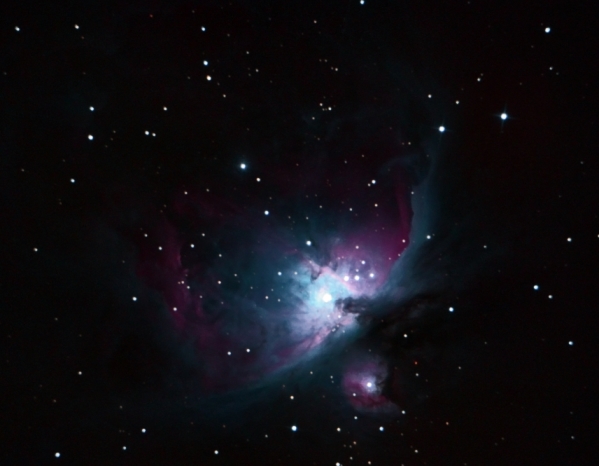

Here are a couple globular clusters. I used to not think much about globulars until the first time I saw one. They are very impressive to look at,
and also to photograph. I don't live far south enough to see the king of the globular clusters, Omega Centauri, but in the north we have M13, the
great Hercules cluster.

Here's one of M5 in the constellation serpens. If your sky is dark enough, it's visible to the naked eye. I've seen a few wide-field photographs of it that are pretty cool, but for me I have to use a telescope to see it.


Here's one of M5 in the constellation serpens. If your sky is dark enough, it's visible to the naked eye. I've seen a few wide-field photographs of it that are pretty cool, but for me I have to use a telescope to see it.

Here's my attempt at M31, the Andromeda Galaxy. I didn't realize just how large M31 is until I tried to photograph it. In a narrow field of view
telescope like a newtonian, it just doesn't fit. I will need to learn how to capture mosaics in order to get the entire object. This was produced
from 40 lights at 70 second exposure time each.


finally had some sunshine this weekend. Sunspot 1734 on 04/05.

300 frames converted in Registax. Celestron 80mm refractor with Baader solar filter and Baader solar Continuum filter with Imaging Source DMK41 CCD camera and 2x Barlow. For solar images the Imaging Source CCD camera gives superior results to my Canon EOS 7D camera, even with an additional UV filter fitted. Wanted to get Ha images too, but by the time I swapped the telescopes, clouds have moved in. One day, when I am mature, I still want to get a mount that can take all of my telescopes at once, lol
Has anybody over here had good results taking solar images with an ordinary SLR? I am not sure if I am doing something wrong, but it seems as though my SLR gets overloaded with UV light, even with an additional UV filter, whereas my unfiltered CCD camera doesn't. Doesn't matter how much I play with exposure settings, etc, I just cannot get acceptable images from the sun with my SLR.
and also on an interesting sidenote, I have studied the sun and outer space via my telescopes for 100's of hours, but I have yet to see any UFO's, or weird phenomena that so many ATS'rs keep on seeing, double suns, etc, etc, etc ..... but I guess, all of us amateur astronomers are paid "shills", hey, where is my money??????

300 frames converted in Registax. Celestron 80mm refractor with Baader solar filter and Baader solar Continuum filter with Imaging Source DMK41 CCD camera and 2x Barlow. For solar images the Imaging Source CCD camera gives superior results to my Canon EOS 7D camera, even with an additional UV filter fitted. Wanted to get Ha images too, but by the time I swapped the telescopes, clouds have moved in. One day, when I am mature, I still want to get a mount that can take all of my telescopes at once, lol
Has anybody over here had good results taking solar images with an ordinary SLR? I am not sure if I am doing something wrong, but it seems as though my SLR gets overloaded with UV light, even with an additional UV filter, whereas my unfiltered CCD camera doesn't. Doesn't matter how much I play with exposure settings, etc, I just cannot get acceptable images from the sun with my SLR.
and also on an interesting sidenote, I have studied the sun and outer space via my telescopes for 100's of hours, but I have yet to see any UFO's, or weird phenomena that so many ATS'rs keep on seeing, double suns, etc, etc, etc ..... but I guess, all of us amateur astronomers are paid "shills", hey, where is my money??????
edit on 6/5/2013 by Hellhound604 because: (no reason given)
edit on 6/5/2013 by Hellhound604 because: Sorry, had to add the sarcy comments.
edit on 6/5/2013 by Hellhound604 because: (no
reason given)
Originally posted by Hellhound604
finally had some sunshine this weekend. Sunspot 1734 on 04/05.
300 frames converted in Registax. Celestron 80mm refractor with Baader solar filter and Baader solar Continuum filter with Imaging Source DMK41 CCD camera and 2x Barlow. For solar images the Imaging Source CCD camera gives superior results to my Canon EOS 7D camera, even with an additional UV filter fitted. Wanted to get Ha images too, but by the time I swapped the telescopes, clouds have moved in. One day, when I am mature, I still want to get a mount that can take all of my telescopes at once, lol
Has anybody over here had good results taking solar images with an ordinary SLR? I am not sure if I am doing something wrong, but it seems as though my SLR gets overloaded with UV light, even with an additional UV filter, whereas my unfiltered CCD camera doesn't. Doesn't matter how much I play with exposure settings, etc, I just cannot get acceptable images from the sun with my SLR.
and also on an interesting sidenote, I have studied the sun and outer space via my telescopes for 100's of hours, but I have yet to see any UFO's, or weird phenomena that so many ATS'rs keep on seeing, double suns, etc, etc, etc ..... but I guess, all of us amateur astronomers are paid "shills", hey, where is my money??????
edit on 6/5/2013 by Hellhound604 because: (no reason given)
edit on 6/5/2013 by Hellhound604 because: Sorry, had to add the sarcy comments.edit on 6/5/2013 by Hellhound604 because: (no reason given)
You get this kind of detail? I really need to get some new stuff! LOL
Anyway I shoot with a T2i on an 5"SCT and I am curious of your setup I would love to see granulation but I might need a different scope for that and and HA scope is out of my budget with so little versatility.
Keep them coming folks! That last shot vinceg posted was awesome.
I leave for my trip to Sedona, AZ this Wed.
All my gear is ready: 5D and 5D Mark III, tripods, glass, one Intervaolmeter and one normal remote shutter release.
Planning time spent in Stellarium.
New moon phase starts on the 9th so the sky should be the darkest possible sky you can get in that area !
Their is a little cloud coverage but I am hoping nothing too horrible. b
I leave for my trip to Sedona, AZ this Wed.
All my gear is ready: 5D and 5D Mark III, tripods, glass, one Intervaolmeter and one normal remote shutter release.
Planning time spent in Stellarium.
New moon phase starts on the 9th so the sky should be the darkest possible sky you can get in that area !
Their is a little cloud coverage but I am hoping nothing too horrible. b
Anyone have any last minute pointers for me?
Things that you find a requirement for shooting the night sky!!
Things that you find a requirement for shooting the night sky!!
that is the difference between using a refractor and a reflector for solar photography. You can use a fairly cheapish refractor, and because you are
not really interested in having all the colours, you can basically ignore chromatic aberration. My old 80 mm refractor I modified, having a permanent
white light Baader filter on it, and a solar continuum filter in front of the camera. If you have ever taken normal telephoto pictures through a
reflector, you would have noticed the little rings caused by the central obstruction (and the other artifacts caused by the spider if you use a
Newtonian). The refractor has none of those, so the granulation comes forward a lot easier after using Registax.
With my 8" reflector, I cannot get the granulation so clear, even though it is collimated as near to perfection as what I can get it.
And I just cannot get the same results with my SLR.... maybe they do some internal processing even with the RAW images, or maybe for this kind of work, a CCD is just superior to a CMOS sensor, I am not sure.
(Sorry, I just looked at my 'white light telescope', and I see it is actually a 90mm refractor, and not 80mm, but I don't think that makes any difference.)
With my 8" reflector, I cannot get the granulation so clear, even though it is collimated as near to perfection as what I can get it.
And I just cannot get the same results with my SLR.... maybe they do some internal processing even with the RAW images, or maybe for this kind of work, a CCD is just superior to a CMOS sensor, I am not sure.
(Sorry, I just looked at my 'white light telescope', and I see it is actually a 90mm refractor, and not 80mm, but I don't think that makes any difference.)
edit on 6/5/2013 by Hellhound604 because: (no reason given)
new topics
-
Official denial
Diseases and Pandemics: 2 hours ago -
MEGA - Let's Make Europe Great Again
Other Current Events: 2 hours ago -
Hamas and Other Islamist Terrorist Groups Announce Support of US Campus Anti-Israel Protests
Education and Media: 3 hours ago -
Psychotronic Operation Rwanda Who Wants To Be A Refugee?
ATS Skunk Works: 3 hours ago -
AI phrenology
Science & Technology: 10 hours ago
top topics
-
4/27/24 New Jersey Earthquake
Fragile Earth: 16 hours ago, 8 flags -
AI phrenology
Science & Technology: 10 hours ago, 4 flags -
Psychotronic Operation Rwanda Who Wants To Be A Refugee?
ATS Skunk Works: 3 hours ago, 3 flags -
Hamas and Other Islamist Terrorist Groups Announce Support of US Campus Anti-Israel Protests
Education and Media: 3 hours ago, 3 flags -
Fun with extreme paints
Interesting Websites: 17 hours ago, 2 flags -
MEGA - Let's Make Europe Great Again
Other Current Events: 2 hours ago, 1 flags -
Official denial
Diseases and Pandemics: 2 hours ago, 0 flags
active topics
-
Psychotronic Operation Rwanda Who Wants To Be A Refugee?
ATS Skunk Works • 3 • : Hecate666 -
AI phrenology
Science & Technology • 14 • : theatreboy -
MEGA - Let's Make Europe Great Again
Other Current Events • 8 • : watchitburn -
Official denial
Diseases and Pandemics • 4 • : Lochid -
-@TH3WH17ERABB17- -Q- ---TIME TO SHOW THE WORLD--- -Part- --44--
Dissecting Disinformation • 714 • : Justoneman -
Killings of Palestinian children are soaring in the West Bank.
World War Three • 163 • : Terpene -
Hamas and Other Islamist Terrorist Groups Announce Support of US Campus Anti-Israel Protests
Education and Media • 5 • : FlyersFan -
Senator Ron Johnson Interview - PART 1: Mishandling Pandemic To What Ends?
Diseases and Pandemics • 5 • : PrivateAngel -
Why Files Our Alien Overlords | How We Secretly Serve The Tall Whites
Aliens and UFOs • 18 • : TheValeyard -
Supreme Court Oral Arguments 4.25.2024 - Are PRESIDENTS IMMUNE From Later Being Prosecuted.
Above Politics • 123 • : xuenchen
